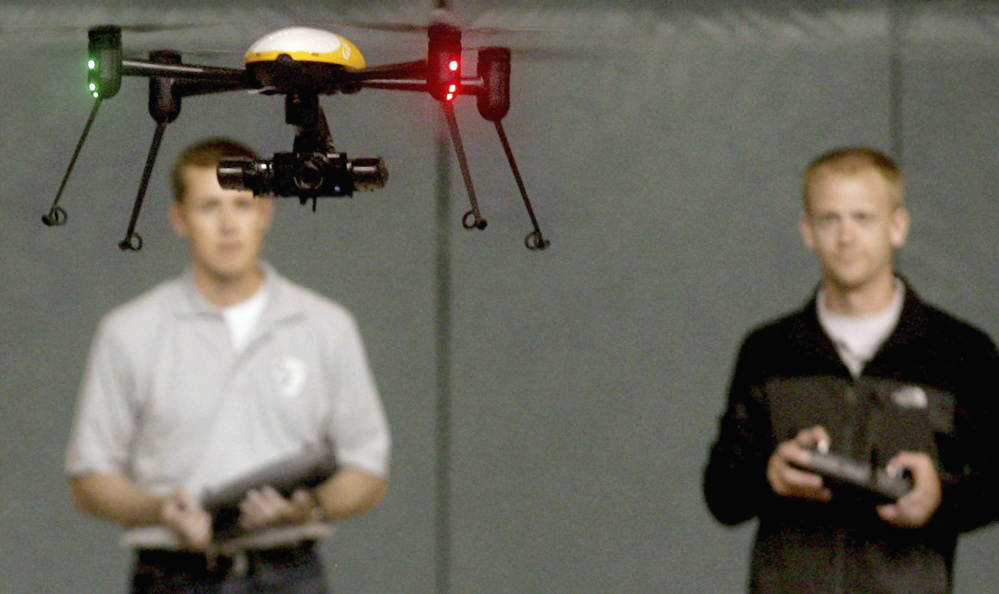The Air Force revolutionized drone warfare. Now it’s finding itself on the defensive.
Rogue toy drones – a hot-selling Christmas gift this season and last – are starting to interfere with military operations at several bases across the country. With sales of consumer drones expected to approach 700,000 this year, military officials say they are bracing for the problem to get worse and are worried about the potential for an aviation disaster.
Last month, an Air Force A-29 Super Tucano aircraft reported a near midair collision with a small rogue drone over the Grand Bay Bombing and Gunnery Range in Georgia, Air Force officials said.
In June, an Air Force KC-10 aerial refueling tanker flying over the Philadelphia suburbs at an altitude of 3,800 feet was forced to take evasive action and barely avoided striking a football-sized drone that passed within 10 feet of its right wing, officials said.
There have been at least 35 cases of small drones interfering with military aircraft or operating too close to military airfields in 2015, according to reports filed with the armed forces or the Federal Aviation Administration.
That’s a small fraction of the estimated 1,000 reports received by the FAA this year of small drones interfering with civilian air traffic or coming too close to passenger airports.
But military officials, who once thought the remote locations of their airfields and restricted airspace offered a measure of protection from wandering drones, said they are no longer immune.
Cmdr. William Marks, a Navy spokesman at the Pentagon, said Navy pilots or air-traffic controllers at U.S. bases have reported close calls or encounters with unauthorized drones 12 times in the past three months. Prior to that, the Navy was recording an average of less than one incident per month.
“We’re seeing an exponential curve, so yes, it is a concern,” he said.
One military airfield that has experienced multiple risky encounters with drones is the Marine Corps Air Station in Yuma, Ariz.
In May, a Marine Corps Harrier jet coming in for a landing at Yuma reported a drone about 100 feet off its right side. In July, a Navy T-45 Goshawk training aircraft flew within 100 feet of another drone about five miles west of Yuma, according to FAA records.
Prior to last year, close encounters with rogue drones were almost unheard of. But rapid advances in technology and falling prices have led to a boom in sales – and a corresponding surge in reports of air-traffic chaos.
Under FAA guidelines, drone pilots flying for recreation are supposed to keep their aircraft below 400 feet and at least five miles away from airports. Regulators, however, have been largely unable to enforce those guidelines.
In an attempt to bring a measure of order to the skies, the FAA on Monday began requiring all recreational drone owners to register online with the agency and to affix identification numbers on their aircraft. More than 45,000 people registered in the first two days. The FAA said it expects that as many as 400,000 small drones could be sold during the holidays.
In anticipation of more difficulties to come, the Air Force last week began a new campaign to educate its pilots, flight crews and air-traffic controllers about the hazards posed by small drones.
Steven Pennington, the Air Force’s director of bases, ranges and airspace, said many consumer drones are only 2 or 3 feet in diameter. At that size, pilots usually can’t see them until they’re within 600 feet – giving the pilots just a second or two to react before the military aircraft whiz by.
Pennington likened the aviation threat posed by small drones to those of large birds, which can weigh anywhere from two to 15 pounds. The difference, he said, is that drones contain hard plastic or metal, like their lithium battery packs.
If a drone were to get sucked into a military jet engine, he said, “we’re relatively certain it would be a significant problem.”
Send questions/comments to the editors.



Success. Please wait for the page to reload. If the page does not reload within 5 seconds, please refresh the page.
Enter your email and password to access comments.
Hi, to comment on stories you must . This profile is in addition to your subscription and website login.
Already have a commenting profile? .
Invalid username/password.
Please check your email to confirm and complete your registration.
Only subscribers are eligible to post comments. Please subscribe or login first for digital access. Here’s why.
Use the form below to reset your password. When you've submitted your account email, we will send an email with a reset code.